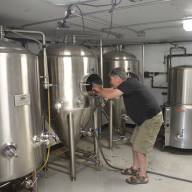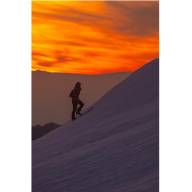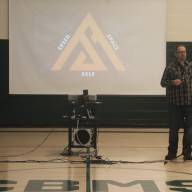Community members gathered to hear about broad trends related to ecological integrity and sustainable recreation from two speakers as part of the Mad River Valley Conservation and Recreation Visioning effort.
The event took place on December 7, at Valley Players Theater in Waitsfield and featured presentations by Gus Goodwin and Drew Pollak-Bruce.
This learning session was the first in a series to be held over the next year hosted by the MRV Conservation and Recreation Visioning (CRV) project team. The goal of this work is to engage the community in seeking a balance between ecological integrity and outdoor recreation across The Valley.
Goodwin works for The Nature Conservancy’s Vermont Chapter as a senior conservation planner.
In considering CRV’s effort to seek a balance, Goodwin offered that the term “balance” implies forces that can cause disturbance. The consequences of those disturbances can impact an ecosystem’s integrity, he said. He cautioned against the implication that there is a “hypothetical, pristine landscape.” The Mad River Valley landscape has been inhabited by humans for millennia, and Indigenous cultures of the region have long recognized that people are inherently part of the environment.
Diving deeper, Goodwin defined ecological integrity based on three, interconnected pillars: composition, structure, and function. He highlighted challenges to each of these elements, including invasive species, forest fragmentation, river diversion, and more. In looking ahead, Goodwin emphasized the importance of thinking at a landscape-level for a fuller understanding of each pillar.
Drew Pollak-Bruce offered a different, but complementary perspective in his presentation on sustainable recreation. Pollak-Bruce recently founded his own firm, CRO Planning and Design, after many years with SE Group. He currently serves as the president of the National Society of Outdoor Recreation Professionals (SORP) and sits on the executive committee of the Vermont Recreation and Parks Association (VRPA).
Pollak-Bruce began his presentation by emphasizing that outdoor recreation professionals are increasingly involved in efforts to promote environmentally sustainable recreation. From the National Forest Foundation to the state-run Vermont Outdoor Recreation Economic Collaborative, Pollak-Bruce provided examples of people looking for ways to align conservation and recreation interests.
Pollak-Bruce shared a number of resources that other places have developed related to sustainable recreation. Colorado was highlighted as an example of landscape-level planning through their statewide Outdoors Strategy. More locally, Vermonters can look to the Vermont Town Forest Trail Design Guide, studies by the Kingdom Trails Network, and the Town Forest Recreation Planning Toolkit. Pollak-Bruce closed his presentation by sharing some current data related to recreation trends. Noteworthy statistics included an illustration of increasing diversity in outdoor recreation, and a ranking of states based on the percentage of their economy dependent on outdoor recreation that shows Vermont as the second-highest in the country.
After the presentations, a Q&A session offered an opportunity for the audience to engage directly with the speakers. Questions from community members touched on topics like ongoing research efforts, multi-use trails, forest connectivity in The Valley, and more. Phil Huffman, CRV steering committee co-chair, asked Goodwin and Pollak-Bruce about their suggestions for the CRV team. “Pull from [existing] experience and resources,” said Pollak-Bruce, “Embed this collaboration into existing structures.” Goodwin offered that biologists are good at developing maps of assets, “But we also need to map actions.”
Attendees were encouraged to suggest topics for future Community Learning Sessions (or with questions or comments) by emailing
A full recording of the event is available on the MRVTV Website: https://mrvtv.com/841902-2/












